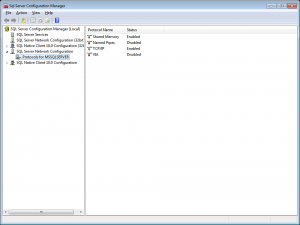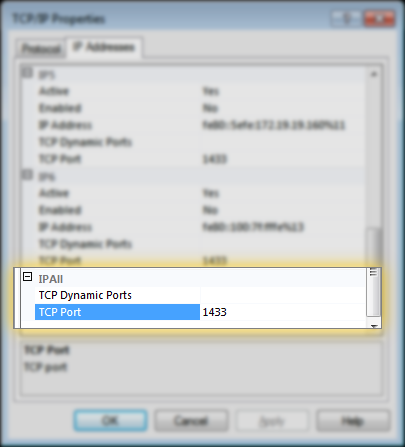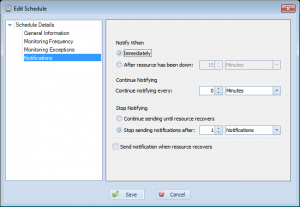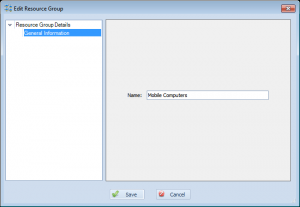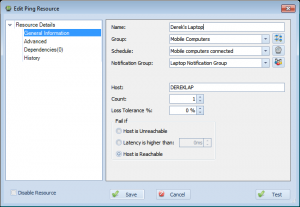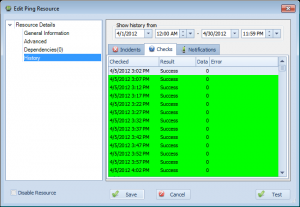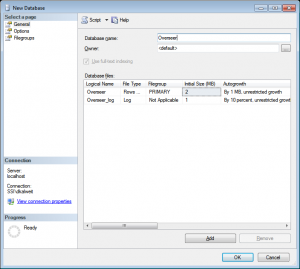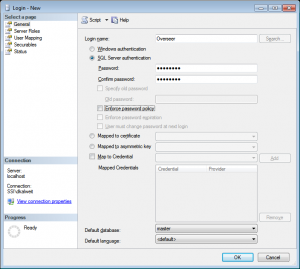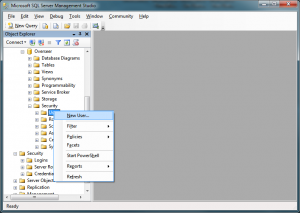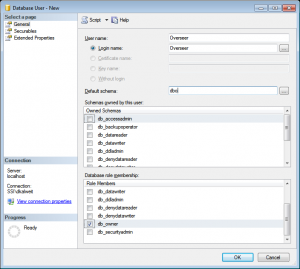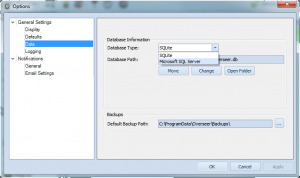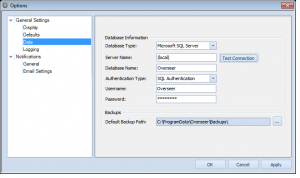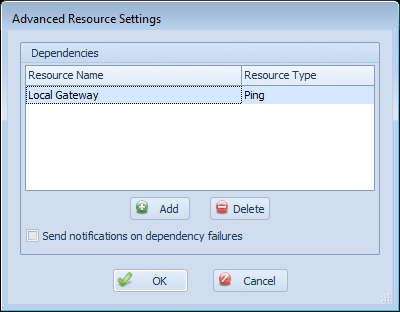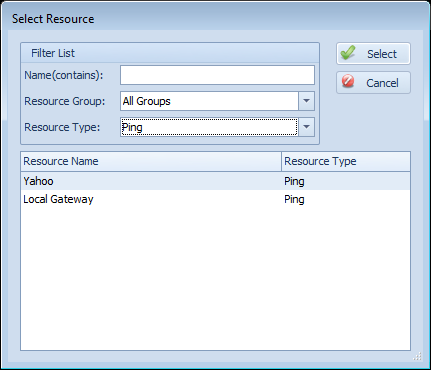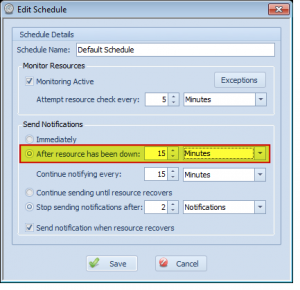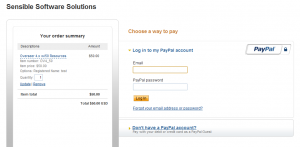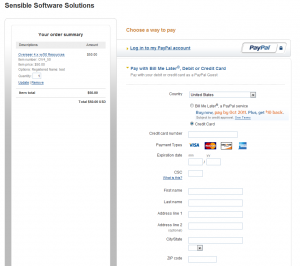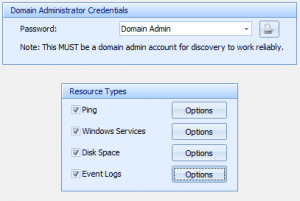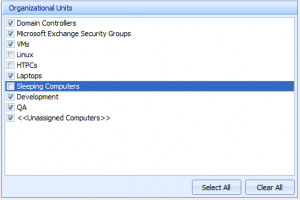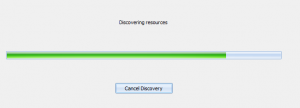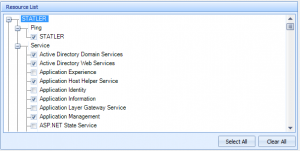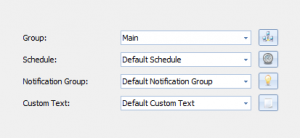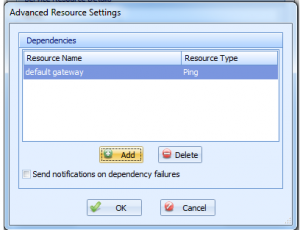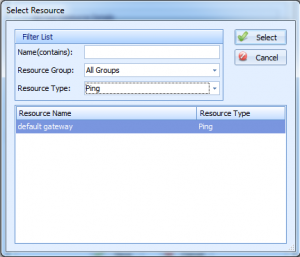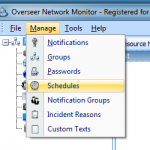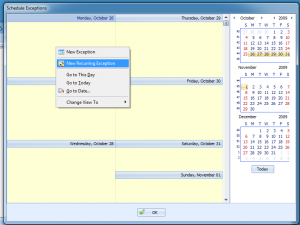How to un-install Overseer
Hi. It has come to my attention, through Google Adwords support, that some people are apparently unable to find how to un-install Overseer. I can’t believe that the smart users of Overseer(or other system-administrator software) wouldn’t know how to un-install software using the built-in mechanism for Windows(or the link added to their start menu), but Google insists they needed instructions posted on the website, regardless:
- Open Windows Control Panel
- Choose “Uninstall Program”
- Double-click “Overseer Network Monitor 5.0”, and complete the process that launches.
Good luck– this might be a tough one for some.
Thanks.
How to move Overseer 5.0 from one computer to another
One of the most frequent support requests I get, is a step-by-step guide on how to move Overseer from one computer(or server) to another. This happens for multiple reasons in production environments. Unlike some other software, moving Overseer to another server is quite easy and painless– no special license activation keys are needed, etc.– just your license key from your original install, the latest Overseer setup file, and a medium to transfer the database(network, thumb drive, etc.).
- Before getting started, it is always best to update Overseer to the latest version, available at http://www.overseer-network-monitor.com/Download.aspx. Please do this on the original computer first.
- Next, start the Overseer management application using the desktop shortcut, and click the ‘Service Running’ icon in the upper right corner to stop the service(say ‘yes’ when prompted if you really want to stop the service).
- Once the service is stopped, it’s time to export your data. Go to Tools->Backup and Restore Wizard. Follow the prompts, noting where the backup file is being placed(you can specify another location if so desired).
- Once backed up, you can get your license key information from Help->License, or ideally your original license Email.
- Now, copy the backup file you just made in step #3 to a safe location– thumb drive, network location, etc.
- Un-install Overseer from this computer.
- Install a fresh copy of Overseer on the new computer, using the same latest version you upgraded the first computer to in #1.
- Apply your license key in Help->License…
- Go to Tools->Backup and Restore Wizard, and select the option to restore your database, pointing to the file you saved off in step #5.
- Wait for the restore/import to complete(this can take a while if you have a large database). Once done, all your settings, resources, and history should be restored onto this new computer, and Overseer should start monitoring your resources from this new computer.
How to fix errors connecting to MSSQL Server
With the addition of the database query monitoring feature of Overseer Network Monitor, I’ve had a couple users come to me with errors connecting to their MSSQL server using Overseer. This is primarily because the default configuration of Microsoft SQL Server disables TCP/IP communication for security reasons. When Overseer is unable to access the MSSQL server, you may get an error like this:
A network-related or instance-specific error occurred while establishing a connection to SQL Server. The server was not found or was not accessible. Verify that the instance name is correct and that SQL Server is configured to allow remote connections. (Provider: Named Pipes Provider, error: 40 – Could not open a connection to SQL Server
Timeout expired. The timeout period elapsed prior to completion of the operation or the server is not responding
To properly configure MSSQL server to listen on TCP/IP, you’ll have to follow these steps:
1. Find and run the “SQL Server Configuration Manager” on the start menu. This should be under “Microsoft SQL Server 2008 R2->Configuration Tools”.
2. Once you open the SQL Server Configuration Manager, navigate to SQL Server Network Configuration->Protocols for MSSQLSERVER. Find ‘TCP/IP’ on the right side, and double-click it:
3. On the TCP/IP Properties page, make sure ‘Enabled’ is set to Yes, and ‘Listen All’ is set to yes, per this screenshot:
4. Also, make sure the port is specified on the ‘IP Addresses’ tab, under the “IPAll” section. This should typically be 1433:
Once this is done, you’ll have to restart the MSSQL Server service, and then attempt to connect to it with Overseer again. If things still don’t work, you may have a firewall blocking port 1433, either on the MSSQL Server machine, the Overseer machine, or potentially a hardware firewall in between– make sure port 1433 is allowed/forwarded as needed.
Moving Overseer 5.0 to another computer
One of the most common support requests I have, is people asking how to move Overseer to another computer. For one reason or another, people simply need to move from older hardware to new, or simply different. Obviously, they want to maintain their existing resources, history, etc.
Overseer 5.0 makes this very easy. To move Overseer 5.0 to another computer, simply follow these steps:
- Open Overseer and stop the service(click the “Service Running” text)
- Go to Tools->Backup and Restore Wizard, and perform a backup to a safe place
- Install Overseer on the new computer
- On the new computer, go to Tools->Backup and Restore Wizard, and perform a restore from the file you just backed up
- Uninstall Overseer from the old computer
At this point, Overseer network monitoring software should be running on your new computer with the resources from the old one. Note that this works both when using SQLite or MSSQL as Overseer’s database.
For more information, please see these entries in the help file:
Should you upgrade Overseer to use MSSQL?
An Overseer 4.1 customer recently asked me when upgrading to 5.0, if they should consider using the MSSQL add-on. While some customers have explicitly asked for Overseer to utilize an MSSQL database, others aren’t necessarily sure what benefits it provides. This blog post will discuss the reasons to use the MSSQL add-in.
Performance
If you have hundreds of resources, and/or use a very short ‘check every’ setting on your resources, Overseer can spend a considerable amount of time waiting for the file system to write data to disk. The default SQLite database works well, but it is built with data-integrity in mind, versus performance– so sometimes a SQLite database will be slower than an MSSQL database. MSSQL uses different algorithms to assure data integrity, which work quite well, while not hurting performance as much as SQLite’s algorithms do.
Additionally, when Overseer uses MSSQL as its database, MSSQL can be running on the same or a different server. This has the potential to allow you to use a far more powerful computer configured as an MSSQL server(likely also used for other applications at your location).
Data Accessibility
If you have a need or desire to access the Overseer data, using MSSQL as the Overseer database is the ideal choice. You can easily open the database in standard MSSQL tools, or integrate easily with your website using code that simply connects to the MSSQL database and queries the data. This makes more extensive reporting possible, along with website status display, etc.
Backup
Overseer supports backing up its database using the Tools->Backup and Restore wizard. This works when using SQLite or MSSQL as the database. When MSSQL is used as the database, however, online backups can be performed using your standard MSSQL backup tools– potentially alongside other MSSQL databases used in your organization.
I’m convinced– how do I use it?
Once you’ve purchased the MSSQL add-on module, you can configure Overseer to use MSSQL as it’s database by following this blog post:
Using MSSQL for Overseer’s database
Being notified when a computer is connected to network
Although Overseer Network Monitor is primarily used to notify administrators of problems when a resource goes down, some administrators have other requirements as well. A customer recently contacted me needing to be notified whenever one of his mobile users connected his laptop to the corporate network. He needed this so he could push policies to them– but this could be useful for many things, such as general network security.
The primary way this is done with Overseer, is with the new ‘Reachable’ setting for a ping resource. There are a few other settings that are best to tune as well. Here’s a step-by-step on setting up a system like this.
First, let’s create a schedule. This defines when these computers should be checked for and how often notifications should be sent. You can define when they are checked by setting values on the ‘Monitoring Frequency’ and ‘Monitoring Exceptions’ screens. For notifications, something like this would probably be ideal:
As you can see, this instructs Overseer to send notifications immediately(as soon as it detects the laptop is connected), do not notify repeatedly(setting of 0 minutes), and to stop sending after 1 notification has been sent. I’ve also unchecked the ‘Send notification when resource recovers’, as this doesn’t matter for us. Name this schedule something appropriate, such as “Mobile Computer Detection”.
Next, let’s create a resource group for these laptops to keep them separate from our other resources. This can be done by going to manage->resource groups and adding one. Give it an appropriate name, such as “Mobile Computers” below:
Next, let’s create an actual resource. Go to New Resource->Ping. Create a resource with settings something like below:
As you can see, I’ve created a resource labeled “Derek’s Laptop”, assigned it to the ‘Mobile Computers’ group I made, assigned the ‘Mobile computers connected’ schedule, and assigned it to a “Laptop Notification Group” notification group I also created(which includes my Email, but not my cell phone, for example). I set the host name to the name of my laptop, and set the fail if setting to ‘Host is Reachable’.
Click Save, and now Overseer will send you a notification whenever that host is connected to the network. Based on our schedule settings, we will also not be notified repeatedly, nor when the computer is removed from the network– but we’ll be notified again if the computer is hooked up after being disconnected. Note that the laptops will need to have their firewalls configured to allow ICMP/Ping requests, if they aren’t already.
Move resource history interface from right click to ‘History’ entry in left tree of Edit Resource dialog
Overseer has supported showing history on resources since the beginning. This can be useful to determine what happened historically, for tracking availability, etc. In previous version of Overseer, this used to be under the right click menu– you had to right click a resource and select ‘Show History’. Unfortunately, this right-click function was often missed by many users– and they had no idea this feature even existed!
With Overseer 5.0, the resource history– including incidents, checks, and notifications sent– is now in the main edit resource dialog. Simply open a resource and select ‘History’ on the left. You can then browse the history easily, using the interface as shown here:
As you can see, this shows the full history of checks, so you can see the history when using Overseer for service monitoring, ping monitoring, disk space monitoring, or any other Windows network monitoring.
Adds the ability to set group/schedule/notification group/passwords defaults in options for all new resources
Each resource created in Overseer has certain fields in common. Most users will use only 1 of each of these things– schedules, notification groups, passwords, and groups… Many more advanced users will use more than one, however. In previous versions of Overseer, these things would always default to the first entry, or to blank for each new resource. This made adding resources more cumbersome than it should be.
In Overseer 5.0, I added the ability to specify the default for groups, schedules, notification groups, and passwords. Simply go to Tools->Options and then select General Settings->Defaults:
This should make Overseer quicker to setup for both paid users and those that opt for using it as free network monitoring software.
Adds the ability to edit multiple resources at once
One of the biggest complaints users have had about Overseer in the past few years, has been the difficulty in maintaining large numbers of resources. If something needs to be changed on all of them, each one must be edited one-by-one. Even though the need for editing these resources has been reduced significantly by using notification groups, schedules, linked passwords, etc., it is still occasionally required.
With Overseer 5.0, this problem is solved– if you have many resources you’d like to edit all at once, simply select them(shift/ctrl+click), and right click->edit resources. This will bring you up with an edit resource dialog where you can easily change settings. If all the resources are of the same resource type, you’ll see resource type specific settings– if you have resources of multiple types, only the common values will be available.
Try it out– this should make Overseer even quicker to use, making it very easy-to-use network monitoring software.
Overseer Debug Mode in 5.0
Occasionally, customer support will require a debug file to aide in resolving a problem experienced with Overseer Network Monitor. Turning on debug mode will instruct Overseer to log a large amount of detail to a plain text log file for review by support. Passwords are NOT logged to this file.
To enable debug mode in Overseer 5.0, please do the following:
- Go to start->run and type ‘regedit’, and click ‘ok’
- Browse to HKEY_LOCAL_MACHINE\SOFTWARE\Sensible Software\Overseer\ on the left side
- On the right side, set the ‘LogLevel’ value to 6
- Restart Overseer Network monitor and the Overseer service
- Recreate the error you’re having or leave debug mode enabled if instructed by support
- Send the files in C:\ProgramData\Overseer\Logs\ to support via Email. If these files are large, you may zip them up or upload them via FTP using credentials received from support.
- Disable debug mode by changing the ‘LogLevel’ value above to zero(0) and restarting Overseer and the Overseer Service.
It is important not to leave debug mode on, as the debug file can get large over time and with time, fill up your hard disk. It could also slow down Overseer and/or your computer if it gets to be a very large text file(gigabytes).
Adds toolbar below menu for easy access to frequently used functions
Overseer has always been a simple-to-use network monitoring tool, and as such, I’ve kept the interface rather simple. I personally didn’t see users accessing items in the drop-down menus often enough to justify a toolbar. However, some users definitely do access functions up there, and generally it’s just a lot faster when a user actually does.
So, with Overseer 5.0, I’ve added a toolbar:
This toolbar offers a few icons:
- New Resource – this option lets you add a new resource to Overseer. Clicking it will show a drop-down of all the different resource types.
- Resource Groups – clicking this option will allow you to edit/add/delete your resource groups
- Notifications – clicking this option will allow you to edit/add/delete your notifications
- Notification Groups – clicking this icon will allow you to edit/add/delete your notification groups
- Passwords – Clicking this icon on the toolbar will let you add/edit/delete your passwords/credentials
- Schedules – If you select this icon, you’ll be able to add/edit/delete your schedules.
- Options – This option presents an easy way to access the Tools->Options section.
- Service Running – This displays the current status of the Overseer service. Clicking it when it says ‘Service Running’ will stop the service. Clicking it when it says ‘Service Not Running’ will start the service
- Help – This will launch the help file.
Overseer backup and restore wizard
Previous version of Overseer did not have a built-in system for both database backup and restoration. Later versions of Overseer 4.x had a backup wizard, but nothing to restore the database afterward. Overseer 5.x adds a robust new backup and restoration system, called the Backup and Restore Wizard.
This wizard makes backing up your database a snap. Simply start the wizard(Tools->Backup and Restore Wizard), select where to place your backup(defaulting to a sub-folder of the Overseer data directory), click next, and the backup is performed. The backup files are automatically named with the date and time, making it easier to see when the backup was done.
Backup files made by the wizard are simple files that can easily be copied or Emailed. They’re in SQLite database format, regardless even if you’re using a MSSQL server for your Overseer database.
Once you have a backup file, you can easily restore that backup by starting the Backup and Restore wizard again, and this time selecting ‘Restore’ and pointing to the file you’re interested in restoring. Note that restoring will overwrite any data you currently have in Overseer– so be careful when restoring backups.
Adds support for extended event logs in W2K8(“Applications and Services Logs”)
One of the big new features in Overseer 5.x, and the core reason for updating to .NET Framework 3.5, is support for Windows 2008 R2’s new extended event logs, termed the “Application and Services Logs”. Reading these event logs required a new API which was only available in .NET Framework 3.5.
Overseer 5.x now supports all of these event logs and the standard event logs. Unfortunately, the API requires Windows Vista, Windows 7, or Windows 2008+ to be running on the Overseer computer as well– so if your Overseer computer is running on Windows XP or Windows 2003, and you want to monitor extended event logs, you’ll have to upgrade the computer running Overseer. Unfortunately, this is a limitation of the API.
With this new feature, along with Overseer’s existing event log filtering, duplicate event detection, and more, Overseer’s event log monitoring software features should satisfy most user’s needs.
Using MSSQL for Overseer’s database
One of the new features in Overseer 5.x, is support for using Microsoft SQL for Overseer’s database. Overseer already supported, and continues to support database monitoring, but this feature is different. Normally, Overseer uses a SQLite file-based database, stored on the local file system. This works quite well, but some people with very large data needs, or those that want easier access to the data for reporting purposes, would prefer to use MSSQL. You can use Microsoft SQL Express, Standard, Data Center, MSDE, etc.– any version of MSSQL except Microsoft SQL CE should work.
Overseer 5.x includes an optional MSSQL add-on module that allows Overseer to use MSSQL as the Overseer database. If you’ve purchased the module and would like to configure MSSQL, this blog post will show you how. If you need to purchase the module, it’s available on this page:
http://www.overseer-network-monitor.com/UpgradePricing.aspx
Creating the database:
First, create a database in MSSQL. This can be done in Microsoft SQL Server Management Studio by right clicking on ‘Databases’ and selecting ‘New Database’:
Name the database whatever you want. I am using ‘Overseer’ in the example below:
Database Login
Next, you must create a database login. You can do so in MSSQL Management Studio by going to Security->Logins, right clicking, and choosing ‘New Login’:
Create a login such as the one below, named ‘Overseer’. I’ve used SQL authentication, but you can use Windows authentication if you’d rather. I do not cover the steps involved in setting up Windows authentication in this blog post.
Creating the database user
Now that we’ve created the database and the server login, we must create the database user. To do this, expand the database, down to Security->Users, and right click and select ‘New User’:
Create the user with the name ‘Overseer’, select the login we created below, set the ‘Default schema’ to dbo, and check “db_owner’ in the ‘Database role membership’ section only:
Overseer Configuration
Now that we have the database created, the MSSQL login created, and the database user created with the appropriate permissions, it’s time to point Overseer to this database. If you plan to upgrade your existing Overseer database, please back it up using the Backup and Restore wizard first. We’ll be restoring it after.
First, go to Tools->Options, and then choose General Settings->Data. Select ‘Microsoft SQL Server’ from the ‘Database Type’ dropdown:
Once Microsoft SQL Server is selected, you’ll be presented with different options. Please enter in the appropriate values– you can use (local) for the MSSQL server if it is installed on the same computer as Overseer– otherwise, enter the server name. For the database name, enter the database we created above. The user is the login name we created above, and the password is the password you used for the MSSQL login:
Click ‘Test Connection’ to make sure things are setup, and then click OK.
At this point, Overseer should be using the new MSSQL database. If you backed up your old database, you can restore it now using the Backup and Restore wizard. Otherwise, you should have a clean, empty database that you can start filling. It may be helpful to use the resource discovery wizard for this purpose.
Another “Network Path was not found” gotcha
When testing Overseer 5.0, I got stuck on a “Network Path is not found” issue. I was testing with workgroup-based computers instead of domain-based computers, and I was quite certain it was due to this setup that the problem was happening– as my domain based computers continued to work fine, even connecting to workgroup-based computers…
Eventually, I tracked this down to using usernames such as “.\administrator”… Sometimes Windows uses these, so you’d think it’d be OK– but when connecting FROM a workgroup-based computer to another workgroup-based computer(and maybe domain computer; I didn’t test that), you’ll get a “Network Path was not found” error– totally useless for an obvious **username** issue… While there are many causes of the network path was not found error, this is one that I didn’t know about until today.
Oddly enough, I did a network tap when trying to figure this out, and I saw Windows attempting to connect **on port 80** to the computer, versus using SMB ports(139, 445, etc.)… This was crazy, yet I could find no information online about this– obviously, it’s using the WebClient service instead when it sees a username like this…I’m still not sure why.
So, bottom line– if you’re receiving a “network path was not found” error, and you’ve gone through the checklist, make sure you’re not using .\username when logging in.
If you’re using Overseer network monitoring software, Overseer will automatically change a username without a domain qualifier into the appropriate MACHINE\username– so simply enter the username, and you’ll be OK.
Overseer resource dependencies
I’ve recently had a couple customers ask me about dependencies. This is a relatively new feature in Overseer, so some of our existing customers don’t even know exactly how to use them. They are rather hidden, but will become more visible in the next major version of Overseer. While hidden, resource dependencies can be very powerful in controlling excessive notifications when a single point of failure goes down, such as an internet connection.
Overseer lets you specify multiple dependencies, although often times this will just be one– such as an internet connection or pinging a server before attempting to monitor Windows event logs, services, disk space, websites, etc.
To setup a dependency, first click the ‘Advanced’ button on the resource dialog:
This will bring up a dialog that lets you add and remove dependencies:
On this screen, click the ‘Add’ button to add a dependency or ‘Delete’ to delete one. You can also select the “Send notifications on dependency failures” setting. When this is checked, Overseer will send a notification to the user when the resource dependency fails. For example, the resource in this example is “Microsoft’s Website”. Overseer will first check the status of the configured ‘Local Gateway’ dependent resource, and if it is down, it will normally not check or send notifications for “Microsoft’s Website” being down– it will simply go to ‘Failure’ status silently instead– ideally so you can get one notification that “Local Gateway” is down, instead of dozens that other resources that depend on it are down as well. However, if this checkbox is checked, notifications will be sent about “Microsoft’s Website” being down when Overseer determines that the “Local Gateway” dependent resource is down.
When clicking ‘Add’ on the resource dependencies screen, you’re presented with this dialog:
This dialog lets you find a resource more easily by filtering– by name, type, and resource group. Once you find the one you’d like, simply double-click it, or select it in the grid and click ‘Select’.
How to prevent ‘false’ notifications
Sometimes Overseer customers will Email me and tell me that Overseer notifies them that their server is down, yet they login and everything is fine. This is something that will occur from time to time– Overseer detects a failure, but this may be caused by a network hiccup(particularly over WAN connections), or occasionally an OS issue. The first thing to do, is obviously investigate by looking at event logs, do some basic network tests(ping [host] -t to look for packet loss), etc.
However, even if something is found, it’s possible that there’s nothing you can do about it right away– but you really don’t want to be bothered by Overseer. Thankfully, there’s a feature in Overseer created just for this purpose. Simply edit the schedule for the resources in question and edit the ‘After resource has been down’ setting, as shown in this image:
Now, Overseer will wait 15 minutes before sending the first notification. So, when Overseer is checking resources using this schedule, if it fails it will see it’s been down 0 minutes, and wait. 5 minutes later, it will check again– if it’s still down, it will be down 5 minutes– which is also less than 15. It will wait until it hits that 15 minute mark(as configured above), and once it does, it will notify the administrators.
Get an Email when a server reboots
Some customers have asked me how to get Overseer Network Monitoring Software to Email them a notification when a server restarts for some reason. While Overseer does not provide this functionality directly, this is possible with a simple event log resource in Overseer, as Windows logs a specific event entry when the server restarts.
To setup an event log resource to monitor when a server restarts, create a new event log resource, set the machine name to the server you wish to monitor, set the appropriate password, and choose “System” as the log name. Double click the default Event Filter and change it to include only event ID 6009 for the ‘eventlog’ resource. You can also click ‘Set Custom Notification Text’ to set a custom text indicating to you that the server has rebooted. Click ‘Test’, and you’ll see a message box with your message, indicating the last time your server was restarted(assuming you keep ‘%TIME%’ in your custom text).
Now, when your server reboots, everyone in the associated notification group will get a notification when the server reboots. If you have any questions or comments, please contact us using the support link above.
Moving Overseer to another computer
People often ask how to move Overseer Network Monitoring Software from one computer to another– maintaining all their configuration settings, data, etc. This is actually a very easy process.
- Close the Overseer application if you have it running
- Stop the Overseer Service(this can be done in the Services MMC under computer management)
- Navigate to c:\Program Files\Overseer 4\Data\ and copy all the files to a safe location
- Un-install Overseer from this computer
- Install Overseer on the destination computer
- Stop the Overseer service on this destination computer
- Copy the files that were copied out in step#3 above into the same directory on the destination computer
- Start Overseer on the new computer
This should maintain all configuration settings, historical data, etc. You can apply your license by going to Help->License… and entering your license information you received in your original Email.
If you have any questions about this process, please contact us using the support link above. Thanks.
Diagnosing “Network path is not found” error
Multiple Overseer customers over the last few years have sent me Emails where Overseer was returning an error from the system, “Network path is not found”. This is a very common error message returned by Windows, and has a number of potential causes– 100% of the time, this has been a configuration issue in the customer’s environment. If you are receiving this error with our network monitoring software, please use this checklist to try to determine the cause:
- Make sure both computers(Overseer computer and remotely monitored computer) are running on the same LAN, or a WAN without port blocking.
- Make sure the Windows firewall is disabled, or that they are sufficiently opened to facilitate communication between these computers.
- Make sure UAC is disabled. Note that some aspects of UAC may remain enabled, even after turning it off in the GUI.
- Check the times on both computers. Computer clocks must be within 15min of each other, ideally within seconds or less. Be sure to check both the date and time.
- Make sure these services are enabled and running on both computers:
- Remote Registry Service
- Server
- Workstation
- Computer Browser
- Remote Procedure Call
- TCP/IP NetBIOS Helper Service
- Open your network card(s) properties, and make sure these are checked:
- Client for Microsoft Networks
- File and Printer Sharing for Microsoft Networks
- Also make sure “Enable NetBIOS over TCP/IP” is enabled
- Make sure “802.1x” authentication is disabled(potentially buried under ‘configure’ tab for network adapter
If all these things are checked and the error persists, please perform these tasks and contact support with the results:
- Check the system, security, application event logs on both computers for potentially related errors
- Make sure you can connect to the remote computer manually:
- Start->Run and type in \\remotemachine\c$ where remotemachine is the name of that computer
- Use the same credentials as used in Overseer when prompted
- Run ‘regedit’ and attempt to open the remote machine’s registry(File->Connect Network Registry…)
- Create a debug file where you’ve re-created the problem, and include it with your message to support.
Overseer Debug Mode
Sometimes when trying to diagnose a problem in Overseer Network Monitor, we will ask customers to enable debug mode. When turned on, Overseer will log a good deal of information to a text file that can be used to determine what is failing where, and how.
To enable debug mode in Overseer, please follow these steps:
- Launch regedit by going to start->run, typing ‘regedit’, and clicking ‘ok’
- Browse to HKEY_LOCAL_MACHINE\SOFTWARE\Sensible Software\Overseer\ in the left pane
- In the right pane, set the ‘LogLevel’ value to 6
- Restart Overseer and the Overseer service
- Re-create the error you’re having or leave debug mode enabled per instructions from support
- Send the files in C:\Program Files\Overseer 4\Data\Logs\ to support. You may have to zip these files to send through Email, or upload via FTP using credentials supplied by support.
- Turn debug mode off by changing the ‘LogLevel’ value above to 0 and restarting Overseer and the Overseer Service.
It is important not to leave debug mode on, as the debug file can grow quite large over time and eventually fill up your hard drive, or otherwise slow Overseer and/or your computer down dealing with a very large text file.
Windows 2008 R2 issues with remote monitoring
Windows 2008 R2, and possibly some other later versions of Windows, have a problem with being remotely monitored by non-domain accounts. This blog post will show how to work-around this Windows “feature” that disables such monitoring.
Recent versions of Windows introduced UAC– User Account Control. While this may be useful on some workstations, most server admins will disable it so they don’t spend half their day clicking ‘yes’ on prompts. What many don’t realize, however, is that disabling UAC on the server doesn’t disable “remote UAC”– most people don’t even know such a thing exists…
Well, it does– and it causes remote monitoring tools like Overseer to **not work** when utilizing local accounts. Domain accounts will still work to monitor the computer, but if you’re trying to monitor a W2K8R2 computer that is not a member of a domain(and therefore using local accounts), you may run into this issue. This is further obscured by the fact that this remote UAC does not appear to affect the built-in ‘Administrator’ account– only separate users that should normally be allowed(members of Administrators group).
Well, the solution is here. To disable this ‘Remote UAC’ feature, you can add this DWORD registry value, setting it to 1:
HKLM\SOFTWARE\Microsoft\Windows\CurrentVersion\Policies\System\LocalAccountTokenFilterPolicy = 1
No restart of the server or any services is required. Note that this registry change must be done on any servers being monitored by Overseer– not just the computer running Overseer itself.
For convenience, you can use the .reg file below to add this registry key, or you can do it manually using regedit.
Purchasing Overseer without a Paypal account
Currently, Overseer is primarily purchased on our website via Paypal. We also support purchase orders for those that wish to pay that way. Some people may not want to create a Paypal account, and that’s OK. The shopping cart system lets you pay with a credit card without logging in or creating a Paypal account. Follow these steps to order Overseer without creating a Paypal account:
1. Select the product on the http://www.overseer-network-monitor.com/Pricing.aspx page, and click ‘Purchase’:
2. Next, confirm your information and click ‘Checkout’ on the shopping cart screen:
3. This will present you with a screen that allows you to either login/create a paypal account, or pay with a credit or debit card without creating an account. To do so, click “Don’t have a Paypal account?”
4. This should then bring you to a screen where you simply enter your credit card information and submit your order, as you would in any other shopping cart:
This should allow you to easily purchase Overseer using any valid credit card, and won’t require you to create a Paypal account that may never be used again.
SQL Express Database Size Limit Notification
Recently a customer needed to monitor MSSQL 2008 R2 Express database sizes and be notified when the size grew too large. It is quite easy to monitor SQL Express database size with Overseer Network Monitor’s Database monitoring capabilities.
As you may know, SQL Express 2008R2 is limited to 10GB databases. Older versions, such as SQL Express 2005 and 2008(R1) were limited to only 4GB. This customer needed to be notified when certain databases hit 80% of their allowed size, so they could run an archival process to keep the database size under the database size limit for SQL 2008 Express R2. To do this, we setup a DB Query resource like this for each database that needed monitoring:
We used this SQL query:
SELECT (SUM(used_pages)*8192)/1024 FROM sys.allocation_units
This gets the size of the data+indexes in the current MSSQL Database. We then setup a simple scalar result evaluator to notify if this value exceeded 8,388,608(8GB). Now, whenever the database size grows large, the customer will receive Emails letting him know to run his archival process.
Resource Discovery Wizard
The resource discovery wizard allows you to discover resources on your network so you don’t have to manually enter all your resources into Overseer. This wizard does require your computers to be a member of a Windows domain/active directory. It also requires a domain admin password to be used to setup the resources. This is generally the architecture most Overseer customers already use, so this shouldn’t be a significant limiting factor for most.
To run the resource discovery wizard, simply select the option under Tools, and follow the instructions:
First, you must specify a domain admin account for discovery to work reliably. You can then select the different resource types you want selected. Click the ‘Options’ button to specify resource-type-specific options.
Next, you can specify the Organizational Units(OU’s) in your domain that you’d like to discover for. This can help limit the scope of your discovery to just servers, just user’s workstations, etc. If you don’t have OU’s setup, you may see just “<<Unassigned Computers>>”– which includes all domain computers not otherwise assigned to an OU.
Next, you simply wait for discovery to complete. Overseer may take a while to connect to all computers and discover all their resources. If you have computers that are powered down in OU’s you’ve decided to discover, this may take even longer. Fortunately, Overseer discovers resources on multiple computers at once during this process.
On the next screen, pick the resources you’d like Overseer to monitor. By default, Overseer will check all the services that are in running state, all event logs, all disks, and all ping resources. This may be overkill for a good monitoring strategy– so you may want to go through and uncheck some services, if you know which ones do not need monitoring.
Next, specify the resource group, schedule, notification group, and custom text. If you’re not sure, the defaults will probably work.
Lastly, you simply let Overseer create your resources. Once that’s done, click ‘Finish’ and you should have many resources configured for you in Overseer.
Resource Dependencies
With a comprehensive resource monitoring strategy, it’s very likely that you have a large number of resources dependent on other resources. This might be an internet link tested via Ping Monitoring, or possibly you’d like to ping a server before doing your Website Monitoring.
Overseer now lets you specify one or even multiple dependent resources for any resource in the system. To setup a dependency, simply open your resource and follow these instructions:
First, click the ‘Advanced’ button on the resource dialog:
This will present you with the dependencies list:
Click ‘Add’ on this screen to add a dependency:
Note that you can filter all your resources by groups, types, and the name.
Once you’re done, simply click ‘ok’ through all the dialogs to save your changes.
When a resource is checked, the current status of dependent resources are checked first. If any of them are offline, the resource is not checked and immediately enters a ‘failure’ state itself. If you have ‘Sent notifications on dependency failures’ checked, you’ll get notifications for the resource being effectively offline due to the dependency failure. Most of the time you won’t want to check this box, as you likely already got a notification that the dependent resource is down.
Event Log Duplicate Filtering
Multiple customers have requested the ability to filter duplicate event log notifications when they’re monitoring Windows Event Logs. At first glance, this may seem like a simple thing, but it’s a little more complex than that.
If you want to enable duplicate event log filtering, you’re going to have to enable this feature on your event log resource(s):
As you can see, you must check the box to prevent duplicates, and then specify a number of minutes as the ‘duplicate’ time window. After this amount of time, if the event is seen again, you’ll get another notification. This is critical, as otherwise you may not get event log entries because you had the same event logged days, weeks, or even months ago.
The second value is the ‘Detection Method’. Windows Event Logs use a source name(such as the name of an application) along with an Event ID. This event ID is a number defined by the source of the event. The last value is the message. This message is usually unique to the specific time an event happens. The event ID usually indicates the type of event happening(i.e. “unable to write to file”), and the message indicates some data specific to that event(i.e. which file cannot be written to). This option lets you control how duplicates are detected.
Schedule Exceptions
Many customers have asked for the ability to specify maintenance periods for their system and network monitoring with Overseer. Well, as of Overseer 4.0.1026.03, this feature is now supported in Overseer! In this blog post, I’ll go over usage of this new feature.
Go to Manage->Schedules:
Next, select your schedule:
Once you’ve selected your schedule, you’ll be presented with the standard Overseer schedule screen:
Click the ‘Exceptions’ button and you’ll be presented with the main Schedule Exceptions screen:
Right click on the calendar and select ‘New Exception’ or ‘New Recurring Exception’ if your maintenance period is regular(i.e. every Tuesday and Sunday night):
Now select the time periods/days for your maintenance period, and click ‘ok’ on each screen to get out. That’s it.
Schedule exceptions will prevent your resources that use this schedule from being monitored during these maintenance periods.
Categories:
- How To (28)
- Known Issues (5)
- New Features (36)
- News about Overseer Network Monitor (3)
- Tips and Tricks (55)
- Using the Software (51)
- Windows Monitoring (9)

